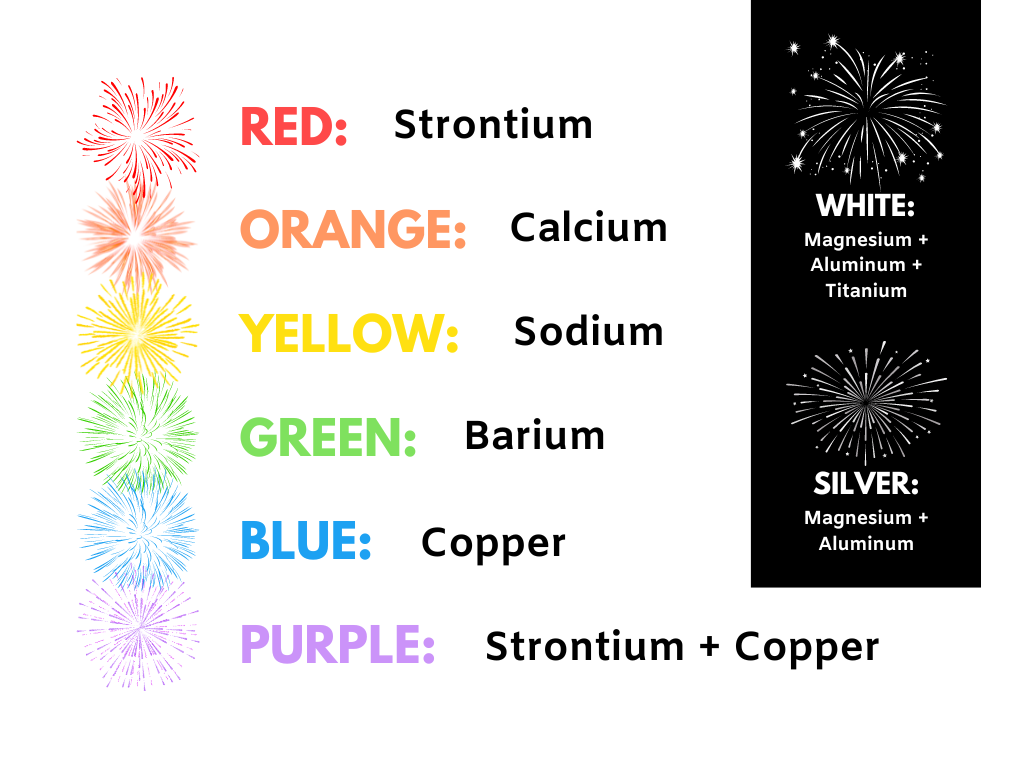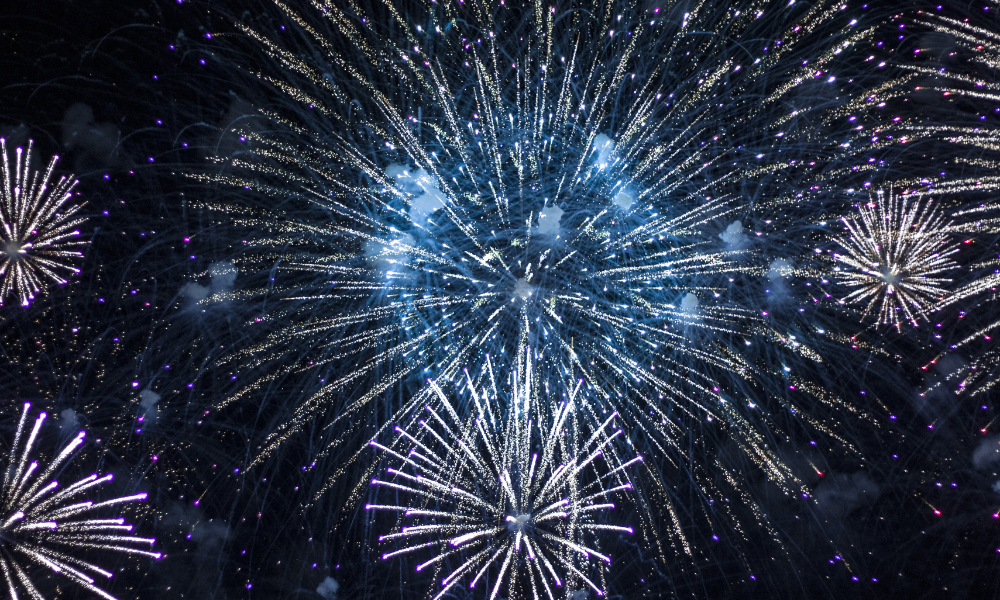Fireworks have long been the go-to symbol of celebration – be it New Year’s Eve, July 4th, the Olympics, or even a birthday party. People spend thousands of dollars on pyrotechnics every year just to see bright colors paint the skies. However, behind the breathtaking display, there are dangers that pose significant risks to our environment.
As July 4th is right around the corner, it’s important to think about the consequences of shooting off pyrotechnics. While they bring moments of joy and excitement, what goes up must come back down, bringing long-lasting and harmful chemicals into our atmosphere. Before we get into the impacts of these spectacles, let’s take it back to the beginning to understand what a firework consists of.
Back to Chemistry Class: What’s a Firework?
At its core, a firework consists of black powder, a type of gunpowder, made of 75% potassium nitrate, 15% charcoal, and 10% sulfur. The shell of the actual explosive contains little stars, which are small spherical pellets of salts, that create the sound and color effects that are so mesmerizing to look at. The color of the burst depends on which salt(s) it is made with as well as the additional substances that are added.

If you’ve ever set off a firework, you know you have to light a fuse to get it to shoot up and out of the mortar that holds it in place. As the unit is being shot into the sky, it goes through the chemical process of combustion, during which the chemical compounds in the firework react with atmospheric oxygen, producing heat which triggers an explosion. As it explodes, the stars create the different color and sound displays that we see in the sky.
What goes up, must come down. So, where does it all go?
When it All Falls Down: The Environmental Impact of Firework Displays
So, we’ve shot off the aerial and flares, the show is over, and we all go home; but, the debris and chemical remnants remain. You can clean up your mess, but you can’t take a broom and dustpan to the troposphere, where all the gasses that were released end up.
The primary danger of fireworks is air pollution, caused by the toxic gasses emitted during their combustion. These gaseous contaminants float up into the troposphere, where they become trapped with the other greenhouse gasses that contribute to global warming. Additionally, particulate matter is also released during the explosion. These microscopic particles, smaller than a human hair, fall back to the ground, contaminating our lungs, bodies of water, and soil. As it falls, the particulate matter creates a toxic haze that is then inhaled by both humans and animals, contributing to respiratory conditions such as asthma and COPD, among others.
The impact extends beyond humans, though. Debris from explosions can contaminate waterways, posing health risks to fish and other aquatic life. The smoke and explosions can also harm or kill birds flying near the detonation site. Closer to home, pets—especially dogs and cats—have very sensitive hearing, and the loud sounds from fireworks can cause them significant stress.
Fireworks provide a fun source of entertainment, but at what cost? Have you considered trying a creative alternative?
If I Can’t Use Fireworks, What Can I Use?: Eco-Friendly Alternatives
You’d be surprised at how many local celebrations have already made the switch to more sustainable celebratory practices.
In the past, the Olympic Opening Ceremony has been known for its firework displays to symbolize the start of the games. At the 2020 Tokyo Games however, instead of fireworks, they put together an intricate drone show that brought a visual representation of the world to life through the innovative technology. Not only are drone shows considerably better for the environment, they have the capability to make really creative designs with their formations.
Similarly, laser light shows are another popular alternative that are more eco-friendly than fireworks. For this July 4th celebration, Lake Oswego in Oregon will be hosting a free live concert and laser show to replace pyrotechnic displays. Other cities in the U.S such as: Boulder, CO, Salt Lake City, UT, and Minneapolis, MN, have also replaced their fireworks with drones and lasers for a “greener” alternative.
Other creative alternatives include: confetti cannons, bubble machines, disco lights, glow sticks, or lanterns. There are many ways to celebrate an occasion without releasing contaminants into the air. The consequences of such are too great to not consider making a switch. Whether you’re hosting a large-scale event or having a backyard celebration, reflect on the environmental footprint you’re leaving and how you can reduce the negative effects of your festivities.
Get ahead of the curve and go green this 4th of July!
Do you follow us on social media?
In other news…
About LGC
Since 2003 LGC has been building connections between businesses with staffing needs and job seekers looking for new opportunities. Our range of solutions includes temporary and permanent placements (and everything in between) for a variety of industries. With offices located nationwide, we can tap into a dynamic pool of talented professionals. We have a passion for creating partnerships that last and work hard every day to ensure both clients and candidates reach their employment goals.




